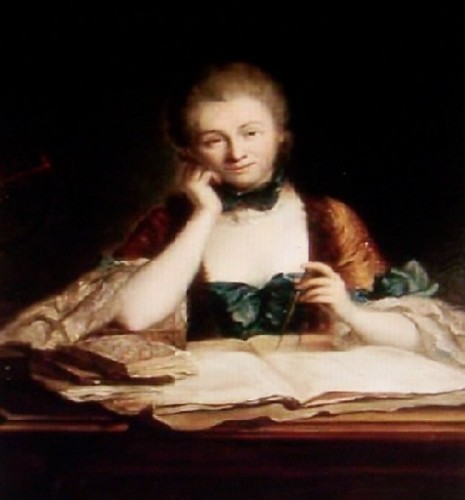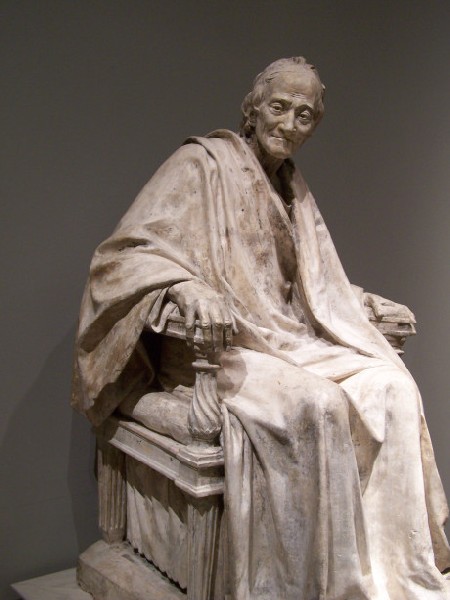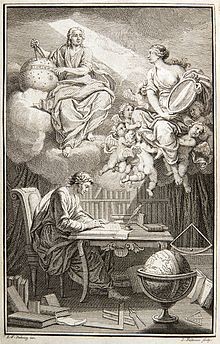Emilie: La Marquise du Châtelet Defends Her Life Tonight
A Brilliant Woman's Love and Philosophy At The Nora
By: Mark Favermann - Sep 19, 2014
EMILE: La Marquise du Châtelet Defends Her Life Tonight
By Lauren Gunderson
Directed by Judy Braha
Choreography by Judith Chaffee
Cast: Lee Mikeska Gardner (Emilie du Châtelet), Steven Barkhimer (Voltaire), Lewis D. Wheeler (Emilie's Husband and various roles), Sophorl Ngin (Younger Emilie and various other roles) and Michelle Dowd (Emilie's mother and various other roles). The Creative Team: Set Design by Steven Royal, Lighting Design by John R. Malinowski and Costume Design by Chelsea Kerl.
Love and Natural Philosophy don't appear to be two things that mix well theatrically. But this notion is nixed by the Nora Theatre Company's brilliant production of EMILE: La Marquise du Chatelet Defends Her Life Tonight now playing through October 5. This is theatre that pushes the boundaries both physically and intellectually about a woman of genius during The Enlightment.
Played with a wonderfully energetic and nuanced characterization by Lee Mikeska Gardner (who is also the Artistic Director of the Nora), Emilie was a rare female 18th-century French intellectual and aristocrat. The unusual setting of the performance space is a metaphysical court in a trench that was bordered on two two sides by the audience/jury. Presenting her case to assess her worth, she tries to make sense of her life and work.
Taking a cue from later Greek Philosophy, the setting of the play could be considered Hades where all mortals are judged after death and are either rewarded or cursed for eternity. Cleverly created by Playwright Gunderson, Emilie's presentation is a defense or justification for her life. We the audience are her judges.
Bookending the performance area are two giant circular structures: one is a clocklike calendar made of concentric circles; the other is made of two partial intersecting circles. The former represents time both cosmic and temporal, and the other is an abstract model of a simple atom. As we enter the theatre, the whole length of the floor is covered in blue glowing mathematic formulas. When lights go down, the blue changes to black and it is a horizontal blackboard.
Moveable furniture creates settings and spaces as well as places for characters to pause and react to each other. Quill pens, papers and books are both tools and finished products. Libraries meant great intellectual wealth. Publication was a great and desirable personal achievement. In the case of an 18th Century women, it was an almost impossible task.
Taught only by various tutors, Emilie, La Marquise du Chatelet (1706-1749) was a French mathematician, physicist and author during the Age of Enlightenment. Her crowning achievement was her translation and thoughtful commentary of Sir Isaac Newton's Principia Mathematica. It was published posthumously in 1759 and is still considered the standard French translation. Profoundly, Emilie's refinement of Newton's mechanics led eventually to Einstein's E = mc2 .
The play dramatizes Emilie's sometimes stormy relationship with Voltaire, one of her lovers. He once wrote to his friend King Frederick of Prussia that she was "a great man whose only fault was being a woman." As shown in the production, Emilie had several other lovers besides her soldier husband. This activity did not hold her back intellectually, however these ended badly in her premature death due to childbirth at age 42.
Lee Mikeska Gardner's Emilie du Châtelet is like watching a force of nature. Her compelling presence is on stage throughout the play--including the intermission. Her Emilie asks and then virtually commands us to try to understand and empathize with her. Love or science? Or both?
To tell the story, her main foil is a very humanly portrayed Voltaire by Steven Barkhimer. The three other extremely versatile actors who play family members, servants, and lovers of the Marquise were excellent. Lewis D. Wheeler, Sophorl Ngin and Michelle Dowd each flawlessly go from mime to dialogue to action.
Director Judy Braha elegantly choreographs the action. Here, literally the dance of life puts no step wrong. All the stagecraft is superb. Steven Royal’s set design is startling and evocative. Recognizable but unworldly, this is theatre as environment, environment as theatre. The lighting design by John R. Malinowski gave life to the words and action. And there was period perfect costume design by Chelsea Kerl.
Making use of humor and profundary, the playwright brilliantly uses our imagination, suspension of disbelief and theatrical schtick to lead us to an understanding, or at least an acknowledgement, of Emilie's intriguing true story. This not well known story is brought to life by portraying, a time, place and intellectual curiosity in the form of ritualistic societal norms and a woman who breaks the culturally restrictive mould. Adding in Emilie's rare opportunity, this play leads to a profound notion of human understanding and personal accomplishment.
Emilie: La Marquise du Chatalet Defends Her Life Tonight is a wonderful theatrical achievement.
.









